Craftfulness Book Review: Mend Yourself by Making Things
"Wool shops draw me to them like a magnet; their pigeon holes overflowing with all those irresistible coloured balls of promise.”
In “Craftfulness: Mend Yourself By Making Things”, authors Rosemary Davidson and Arzu Tahsin combine personal experience and crafter interviews with research into how everyday people improve their lives and wellbeing through crafting of all kinds. For full disclosure, I’m quoted several times throughout this book because of my own extensive research into the health benefits of crochet specifically. This book covers all different types of crafts. I am thrilled that I was able to be a voice here specifically for crochet, which historically hadn’t been widely covered prior to very recent years. I’ve seen firsthand how crocheting everyday helps people, myself included, with all types of different challenges, so the fact that I could contribute that to this book was important to me.
Rosemary and Arzu were sitting in the kitchen one November, knitting in a rush to complete Christmas gifts, when they had the conversation that sparked the creation of this book. Crafting alone is amazing but crafting in community (even with just one other friend) is a powerful thing and this is just one example of where it can lead.
“Whatever challenges life throws at you, you are better able to meet them face-on and stay standing: you have got the tools to shield and save yourself. You are a warrior armed only with woodblock tools, knitting needles and a crochet hook!”
Crochet Helps Us Because It’s Creative Without Being Intimidating
Early on in the book, the authors address the interesting issue of how so many people don’t see themselves as creative. They cite various studies into this, but the key thing is that this individual feeling of not being creative or not being “an artist” persists for so many people. This limits so many people from truly celebrating their craft.
At the same time, I have found that people turn to craft – and to crochet specifically – because they don’t necessarily see it as “art” and therefore it’s more accessible to them. Many people with mental health issues struggle with low self-esteem so naturally seeing themselves as “artists” can be a challenge. Many of the people that I have interviewed over the years regarding the health benefits of crochet have told me that they are too intimidated to try painting, drawing, and other “art” forms but they feel safe enough to try a craft such as crochet or knitting where there are patterns and established stitches. It’s a creative act but you don’t initially have to see yourself as a creative person to engage with it.
Arzu loves bookbinding, and she explains something about this craft that I find very similar to crochet:
“Binding books is a craft where one is always learning: it is an ideal craft for therapy, in that is it possible to make simple books with very basic skills in a short time; however, over longer periods, structures with increasing complexity are equally satisfying.”
One of the things that is great for crochet as therapy is that you only need to know very basic stitches to make projects you can be proud of. However, if you want to keep growing and challenging yourself, there is nearly endless opportunity to do so because of all of the stitch patterns, techniques, and patterns out there.
Going back to identifying as a creative person … it’s something I’ve discussed frequently in my own work, particularly in my book of crochet exercises, Hook to Heal, where I encourage everyone reading to begin thinking of themselves as artists. Crochet is wonderful because it provides people with that easy step into the world of creativity, something they can do despite believing they aren’t creative. However, it’s also this amazing tool that you can work with to be able to understand at a deep level that indeed you are quite creative; your crochet work shows it. And again, because crochet starts so simply but then has endless possibilities for growth, it can be the perfect craft for going from tentatively seeing yourself as crafty to really owning your artistic side. You can boost your own self-esteem and commitment to your creative practice when you recognize it as a creative art in this way.
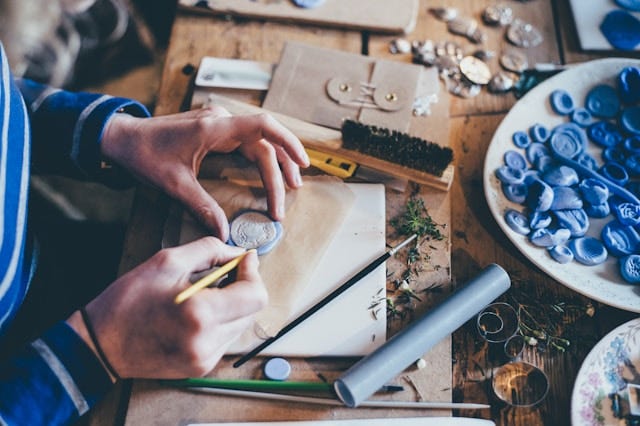
What is Creativity Anyway? Getting into a Flow State
To that end, the authors define creativity, within the context of craftfulness, as two things:
1. “Simply the act of making something, using your imagination and your hands as tools to express an idea or an emotion, by producing an object.”
2. “A mode of thinking differently: a creative mind allows you to form ideas for new ways of doing and to see the seemingly ordinary in a fresh light.”
Midway through the book, they dig deep into the flow state (as defined by psychologist Mihaly Csíkszentmihályi). Flow is about being fully immersed in your work, giving your attention to the process and letting the outside world fade away. People frequently achieve this state through crafting and its where many of craft’s benefits come from. The authors review Csíkszentmihályi’s criteria for reaching flow, describing how to apply each one to craft. This gives the reader a way to more clearly understand how to alter a crochet practice to encourage yourself to get into that flow state where you’ll reap so many rewards.
Indulging in your senses and focusing on the tactile experience of the process is one of the best ways I’ve found to get into a flow state with crochet. Rosemary’s words about knitting resonate:
“I adore everything about knitting, from the texture of different wools and yarns to the smell of those soft, warm bundles with their paper belly-bands fresh from the shop. Wool shops draw me to them like a magnet; their pigeon holes overflowing with all those irresistible coloured balls of promise.”
Coping with Fear and Self-Doubt When Crafting
After discussing the flow state, the authors go on to one of the most practical, useful parts of the book. They address the issue of fear, negativity, and self-doubt. It arises even in crafting. Craft should and can be healing but we can also sometimes use it (or our fears around “not be good enough at it”) to beat ourselves up. This section acknowledges that challenge and provides support and tools to help work through that. If you ever find yourself too intimidated to try a particular crochet project because you think you “can’t” then this is the section of Craftfulness for you. They also address additional practical issues such as how to create both time and space for crafting.
Put It Into Action: Projects in Craftulfness
Then the entire last section of the book is devoted to different craft projects. If you’re in the mood to set down your crochet and try something new, you’ll find instructions here to
build a wooden mini loom and weave a piece of wall art
knit a moss stitch scarf
bind a pamphlet of your own chosen papers
sculpt a clay pinch pot
mend a garment with darning, including adaptations for a knitted garment
You’ll also find suggestions for writing and drawing practices in this section of the book. Each craft is just a starter project, with wonderful back story describing why you might enjoy trying it. If you love it, you can move on to more in-depth projects from other sources. In other words, although this section has instructions for completing projects, more than anything else it’s about inspiring you to try new things.
And if you try something new and don’t like it, that’s okay.
“Arzu likes crochet; Rosemary can’t get the hang of it and doesn’t see the point. Why crochet, she asks, when you can knit? Arzu concurs. Each to their own. Don’t stress and only do what you enjoy.”
Specific benefits of craft mentioned in the book:
Analog experience to help counteract the negative impact of constant screen time
Balance in life that prevents burnout
Clarity, it gives you space to think without over-ruminating so you can problem solve as you craft
Community building; Rosemary was quoted in The Telegraph as saying, “You don’t necessarily need to walk into a pottery class, and say, ‘I’m depressed!’ But in going to that class, meeting other people and making community connections, it might be a conversation that can happen more naturally.”
Confidence building
Connects mind and body in a holistic form of therapy
Creative problem-solving skills develop
Decrease loneliness and problems associated with isolation, because you are part of a community even if it’s just the generations before and after you who crafted
Energizing; it’s possible to just feel great when crafting
Hands-on physical work helps us feel more in control of our surroundings which helps build resilience against depression and other mental health issues; it’s empowering
Imagination – so much opportunity to stimulate the imagination, which often gets dulled during times of mental health struggle
Increases flexibility in thinking which makes it easier to tolerate confusion, conflict, and change
Mindful meditation which has benefits that include mood regulation, stress reduction, lower anxiety, better sleep
Occupied and focused attention which means that your mind doesn’t wander to all of your stressors
Pleasure / reward; you get a dopamine hit in the brain from doing this thing that you love
Rebuild short-term memory, which can be lost in certain conditions including PTSD
Relaxation
Sense of purpose; it gives you something to do that feels meaningful and valuable
Stay in touch with your true self, connect to your center
Time to reflect which can particularly aid in grieving after loss
If you read this far, perhaps you liked the work. The work does take work. It only continues with support, so please consider subscribing. My annual rate starts at $10 per year.




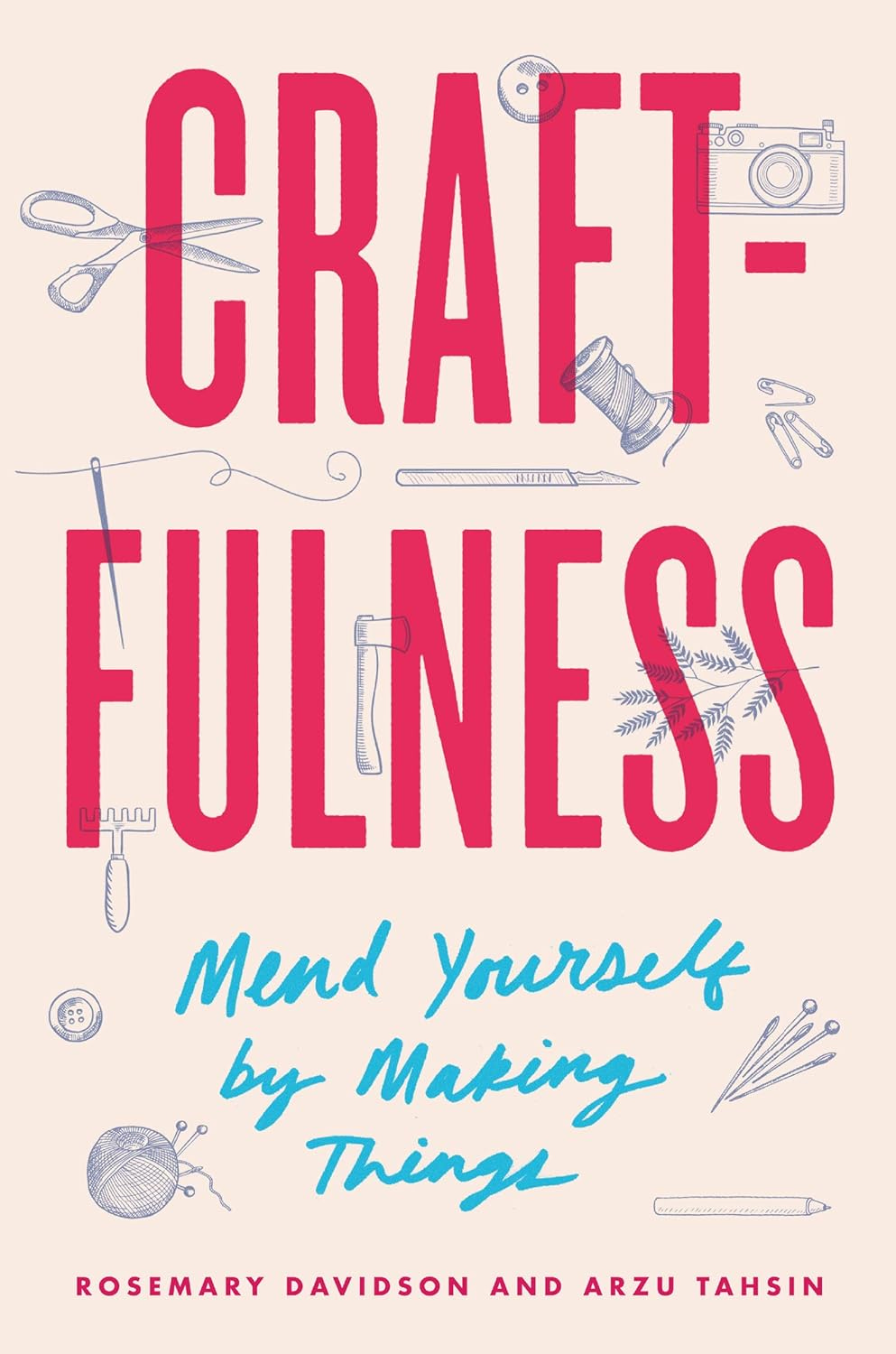
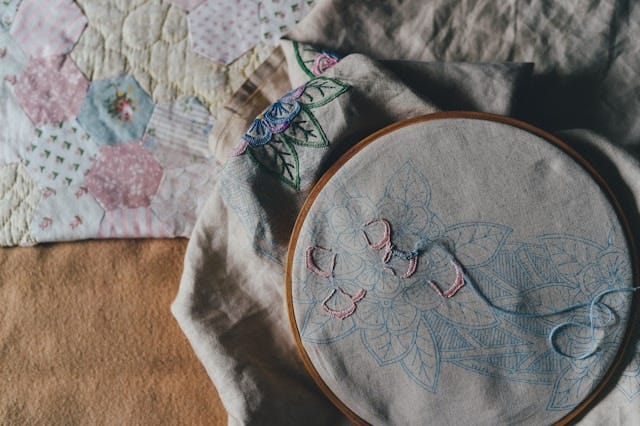

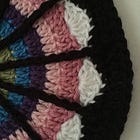
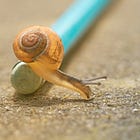
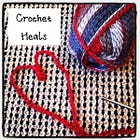
Sounds like a great resource and source of inspiration - thanks for bringing this to our collective attention 🥰
New subscriber and I just ordered the book thank you